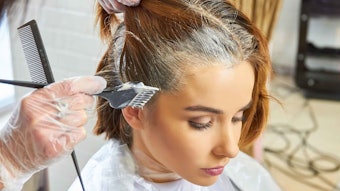There are many materials that can provide color to a product. The materials that are useful in cosmetic applications are regulated by the United States Food and Drug Administration (FDA).
Currently, there are 64 color additives approved by the FDA for cosmetic use either with or without batch certification. If a cosmetic product contains a color additive (except coal-tar hair dyes) it must adhere to the requirements established in the FD&C Act, Sec. 721; 21 U.S.C. 379e; 21 CFR Parts 70 and 80. Following are the guidelines provided by the FDA for "Color Additives and Cosmetics," as sourced from its website.
Color additives are subject to a strict system of approval under U.S. law [Federal Food, Drug, and Cosmetic Act (FD&C Act), sec. 721; 21 U.S.C. 379e]. Except in the case of coal-tar hair dyes, failure to meet U.S. color additive requirements causes a cosmetic to be adulterated [FD&C Act, sec. 601(e); 21 U.S. Code 361(e)]. Color additive violations are a common reason for detaining imported cosmetic products offered for entry into this country.
Some Basic Requirements
If your product (except coal-tar hair dyes) contains a color additive, by law [FD&C Act, Sec. 721; 21 U.S.C. 379e; 21 CFR Parts 70 and 80] you must adhere to requirements for:
- Approval. All color additives used in cosmetics (or any other FDA-regulated product) must be approved by FDA. There must be a regulation specifically addressing a substance's use as a color additive, specifications, and restrictions.
- Certification. In addition to approval, a number of color additives must be batch certified by FDA if they are to be used in cosmetics (or any other FDA-regulated product) marketed in the U.S.
- Identity and specifications. All color additives must meet the requirements for identity and specifications stated in the Code of Federal Regulations (CFR).
- Use and restrictions. Color additives may be used only for the intended uses stated in the regulations that pertain to them. The regulations also specify other restrictions for certain colors, such as the maximum permissible concentration in the finished product.
How are color additives categorized?
The FD&C Act Section 721(c) [21 U.S. C. 379e(c)] and color additive regulations [21 CFR Parts 70 and 80] separate approved color additives into two main categories: those subject to certification (sometimes called "certifiable") and those exempt from certification. In addition, the regulations refer to other classifications, such as straight colors and lakes.
- Colors subject to certification. These color additives are derived primarily from petroleum and are sometimes known as "coal-tar dyes" or "synthetic-organic" colors. (NOTE: Coal-tar colors are materials consisting of one or more substances that either are made from coal-tar or can be derived from intermediates of the same identity as coal-tar intermediates. They may also include diluents or substrata. (See Federal Register, May 9, 1939, page 1922.) Today, most are made from petroleum.)
- Except in the case of coal-tar hair dyes, these colors must not be used unless FDA has certified that the batch in question has passed analysis of its composition and purity in FDA's own labs. If the batch is not FDA-certified, don't use it.
- These certified colors generally have three-part names. The names include a prefix FD&C, D&C, or External D&C; a color; and a number. An example is "FD&C Yellow No. 5." Certified colors also may be identified in cosmetic ingredient declarations by color and number alone, without a prefix (such as "Yellow 5").
- Colors exempt from certification. These color additives are obtained primarily from mineral, plant, or animal sources. They are not subject to batch certification requirements. However, they still are considered artificial colors, and when used in cosmetics or other FDA-regulated products, they must comply with the identity, specifications, uses, restrictions, and labeling requirements stated in the regulations [21 CFR 73].
- Straight color. "Straight color" refers to any color additive listed in 21 CFR 73, 74, and 81 [21 CFR 70.3(j)].
- Lake. A lake is a straight color extended on a substratum by adsorption, coprecipitation, or chemical combination that does not include any combination of ingredients made by a simple mixing process [21 CFR 70.3(l)]. Because lakes are not soluble in water, they often are used when it is important to keep a color from "bleeding," as in lipstick. In some cases, special restrictions apply to their use. As with any color additive, it is important to check the Summary of Color Additives Listed for Use in the United States in Foods, Drugs, Cosmetics and Medical Devices and the regulations themselves [21 CFR 82, Subparts B and C] to be sure you are using lakes only for their approved uses.






!['I think the biggest game-changer about [MoCRA's] ... requirement for GMPs is how it changes what it means to be adulterated,' Brandi Reinbold, senior manager of global certification for NSF International, said in this sponsored videocast. Register now to watch and learn more. It's free.](https://img.cosmeticsandtoiletries.com/files/base/allured/all/image/2023/11/NSF_Intl_Thumbnail.6554efdc29816.png?auto=format%2Ccompress&fit=crop&h=191&q=70&rect=275%2C70%2C1328%2C748&w=340)



